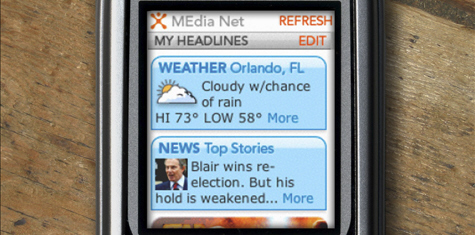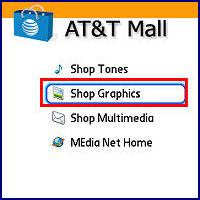|
|
Continue reading ETI Views and News at
econtech.com,
or download a
printer-friendly version.
|
|
Should different regulatory treatment apply to wireline vs. wireless broadband internet access?
|
|
 While most facilities-based broadband service providers – telcos, cablecos, and wireless carriers – remain staunchly opposed to the imposition of any meaningful net neutrality rules, the wireless industry has been particularly outspoken in its efforts to assure a wireless carve-out with respect to any rules that the FCC might ultimately adopt. Wireless carriers have gone to great lengths to differentiate wireless Internet access from wireline, by engineering various hardware- and software-based linkages between basic Internet access and proprietary content and applications that they provide. These linkages, they argue, are so basic and essential to the operation and management of wireless networks as to make it impractical, if not altogether impossible, for net neutrality rules to be implemented for wireless Internet use. But do these essentially self-created technical distinctions between wireless and wireline Internet access justify the net neutrality carve-out that wireless carriers demand?
While most facilities-based broadband service providers – telcos, cablecos, and wireless carriers – remain staunchly opposed to the imposition of any meaningful net neutrality rules, the wireless industry has been particularly outspoken in its efforts to assure a wireless carve-out with respect to any rules that the FCC might ultimately adopt. Wireless carriers have gone to great lengths to differentiate wireless Internet access from wireline, by engineering various hardware- and software-based linkages between basic Internet access and proprietary content and applications that they provide. These linkages, they argue, are so basic and essential to the operation and management of wireless networks as to make it impractical, if not altogether impossible, for net neutrality rules to be implemented for wireless Internet use. But do these essentially self-created technical distinctions between wireless and wireline Internet access justify the net neutrality carve-out that wireless carriers demand?
To be sure, wireline services are subject to fewer capacity constraints than wireless, which is necessarily limited to available electromagnetic spectrum. Beyond that, however, the underlying telecommunications transmission supporting both of these forms of Internet access are quite similar.
Artificial distinctions
Unlike the wireline broadband environment where users typically select the device and software (e.g., a computer, operating system, web browser, and any number of third party applications) they will use for Internet access, wireless carriers in the US require their customers to use only carrier-approved handsets controlled by carrier-limited software. Even though there is no legal, regulatory or technical basis for these restrictions, the vast majority of wireless handsets sold in the US are carrier-branded, i.e., provided either directly through a carrier-owned retail outlet or through a carrier-authorized agent or reseller. In this way, the carrier acts as “gatekeeper” with respect to handset functionality.
 Users of traditional wireless handsets (i.e., not “smartphones”), are often limited to accessing the web through a carrier-specified browser that imposes severe limits on the form of the web content that can be viewed. The consumer is offered the opportunity to purchase a limited array of proprietary add-on features, but only via a carrier-operated portal. These include such things as ringtones, games, and music downloads. In general, the customer is blocked from purchasing these from any non-carrier-approved source. There is no technical basis for any of these limitations: the underlying wireless data network, like the wireline Internet, is totally agnostic as to what type of content is being carried, or what application receives the data at either end. Claims to the contrary are reminiscent of the old “harm to the network” warnings frequently advanced by telcos back in the 1950s and ‘60s in their (ultimately – and fortunately – unsuccessful) efforts to persuade the FCC not to allow customers to interconnect their own handsets, business phone systems, and other “customer premises equipment” with the public telephone network.
Users of traditional wireless handsets (i.e., not “smartphones”), are often limited to accessing the web through a carrier-specified browser that imposes severe limits on the form of the web content that can be viewed. The consumer is offered the opportunity to purchase a limited array of proprietary add-on features, but only via a carrier-operated portal. These include such things as ringtones, games, and music downloads. In general, the customer is blocked from purchasing these from any non-carrier-approved source. There is no technical basis for any of these limitations: the underlying wireless data network, like the wireline Internet, is totally agnostic as to what type of content is being carried, or what application receives the data at either end. Claims to the contrary are reminiscent of the old “harm to the network” warnings frequently advanced by telcos back in the 1950s and ‘60s in their (ultimately – and fortunately – unsuccessful) efforts to persuade the FCC not to allow customers to interconnect their own handsets, business phone systems, and other “customer premises equipment” with the public telephone network.
 “Smartphones” can communicate with most ordinary HTML websites via a traditional (non-carrier) web browser, can download photos, videos, and other content directly from the web rather than being limited to a carrier-sponsored portal and, subject to the technical properties of the smartphone device, can purchase and use applications authored by sources other than those “approved” by the carrier. Wireless carriers have nevertheless persisted in placing artificial restrictions as to the permitted uses their smartphone customers can make of the underlying data stream. For example, Apple and AT&T have an exclusive arrangement whereby Apple’s iPhone is available in the US only for use on the AT&T network, and Apple limits the applications offered to iPhone users by requiring that all “apps” be purchased solely through its proprietary “App Store.” Some of the restrictions on the App Store are clearly set by Apple, but others (such as limitations on third party VoIP access to the 3G data stream) are likely carrier imposed. These restrictions are also artificial – hackers have utilized a process known as “jailbreaking” to remove the Apple/AT&T restrictions on available applications, affording the user access to non-approved apps and unfettered access to the basic TCP/IP stream, and iPhones have been successfully unlocked and used on networks other than AT&T.
“Smartphones” can communicate with most ordinary HTML websites via a traditional (non-carrier) web browser, can download photos, videos, and other content directly from the web rather than being limited to a carrier-sponsored portal and, subject to the technical properties of the smartphone device, can purchase and use applications authored by sources other than those “approved” by the carrier. Wireless carriers have nevertheless persisted in placing artificial restrictions as to the permitted uses their smartphone customers can make of the underlying data stream. For example, Apple and AT&T have an exclusive arrangement whereby Apple’s iPhone is available in the US only for use on the AT&T network, and Apple limits the applications offered to iPhone users by requiring that all “apps” be purchased solely through its proprietary “App Store.” Some of the restrictions on the App Store are clearly set by Apple, but others (such as limitations on third party VoIP access to the 3G data stream) are likely carrier imposed. These restrictions are also artificial – hackers have utilized a process known as “jailbreaking” to remove the Apple/AT&T restrictions on available applications, affording the user access to non-approved apps and unfettered access to the basic TCP/IP stream, and iPhones have been successfully unlocked and used on networks other than AT&T.
Wireline Internet users are currently afforded many other freedoms not available with wireless access. For one, since any Internet-capable device can be used with wireline Internet access, users can easily overcome any hardware or software restriction by simply utilizing a different device – a fact that effectively prevents most hardware manufacturers and software developers from seeking to impose artificial and arbitrary limitations on the capabilities of their products. In contrast, tie-ins between wireless carriers and authorized wireless devices operate to reduce competition in the wireless device and software market to the same relatively noncompetitive condition extent in the wireless services market. Imposition of rules mandating device independence and net neutrality on wireless services would materially alter this condition.
Implications of carrier-created differences
These fabricated restrictions are emblematic of the fundamentally noncompetitive character of the US wireless market. As we had discussed in July’s Views and News, there has been a increasing trend toward greater concentration among US wireless carriers. Consolidations and growing consumer dependence upon wireless services have expanded the market power of the four national carriers – AT&T Mobility, Verizon Wireless, Sprint, and T-Mobile – market power that does not seem to have been diminished following the entry of disruptive competitors such as MetroPCS, which offers its services sans contracts, early termination fees, and surcharges. That notwithstanding, the “big four” carriers have nevertheless been able to impose contracts with onerous terms and conditions, as well as a variety of use restrictions applicable to data services, while remaining successful in forcing the vast majority of subscribers to accept them. Importantly, the prevailing restrictions present in wireless Internet services should be regarded as providing a strong indication as to what portends for wireline services if ILECs and cablecos are permitted to engage in these same practices. Whatever artificial linkages may be crafted between wireless Internet access and certain “information services” do not alter the fundamental telecommunications character of the wireless Internet access service and, like wireline Internet access, these too should be subject to similar net neutrality regulations.
For more information on this subject, please contact Colin B. Weir at cweir@econtech.com
Read the rest of Views and News, August 2010.
|
|
|
|
About ETI. Founded in 1972, Economics and Technology, Inc. is a leading research and consulting firm specializing in telecommunications regulation and policy, litigation support, taxation, service procurement, and negotiation. ETI serves a wide range of telecom industry stakeholders in the US and abroad, including telecommunications carriers, attorneys and their clients, consumer advocates, state and local governments, regulatory agencies, and large corporate, institutional and government purchasers of telecom services. |
|
|